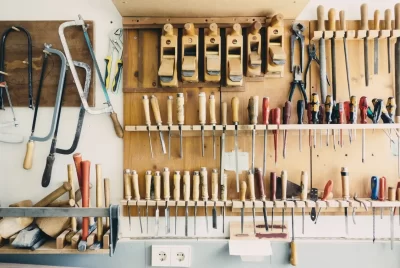The Jigsaw: Best Tips and Techniques
Whether for DIY projects or professional tasks, using a jigsaw can dramatically increase your efficiency. Yet, leveraging this tool for optimal results requires some fascinating know-how. So, let’s unravel the puzzle!
Selecting the Optimized Jigsaw Blade for Various Materials
Choosing the right blade for your task is not only crucial for the outcome but necessary for the lifespan of your tool. Each material, from hardwood to ceramic, requires a tailored approach:
- Hardwood and softwood: For these common materials, consider using a blade with larger teeth for quick, rough cuts. For a smoother finish, go for a blade with smaller teeth.

- Metal: The metal-crafted blade is your go-to choice. Remember, safety first. Do not attempt to cut metals using a wood blade, as this may cause breakages.

- Ceramic: These have specific blades, designed to cut slowly but precisely to avoid any damage to your work surface.

Under $100 or More: Judging Jigsaw Value Based on Pricing and Features
Context is king when it comes to pricing. Not every task requires the highest-rated jigsaw on the market. First, evaluate your needs:
If you’re a DIY enthusiast with lesser frequency and demand from your tool, a basic model under $100 may suit you perfectly. On the other end, for demanding tasks or those keen on longevity and durability, spending upwards of $100 may prove a wiser decision.
Pay attention to the features as well. Advanced speed settings and better ergonomics underpin the higher-end models, providing more control and comfort.
Cutting Techniques That Make a Difference
Now to the real deal – cutting. Your techniques can make or break your project.
Square Cutting Precision: Ensuring Blade and Base Alignment
Want precise cuts? Ensure your blade is square to the base. It is fundamental, yet many fail to realize its importance. Invest in a high-quality square tool to aid in this task, and thank me later!
Reverse and Upstroke: The Blade Movement Impact on Cutting Quality
Did you know that the blade movement can greatly impact your cut’s quality? Here’s how:
The standard blades cut on the upstroke, which might result in some chipping on the top of your workpiece. But, by using a reverse-cutting blade, or an upstroke blade, the cutting action happens as the blade pushes down, reducing chipping. Choose wisely!
Yes, it’s that simple. Jigsaws are not complicated; they’re essentially friendly tools here to help you make that perfect cut!
Mastering the Jigsaw Settings for Effective Cutting
Armed with the best blade and cutting techniques, it’s time to deepen the mastery with the appropriate jigsaw settings!
Material-Based Adjustments: Oscillation and Blade Choice
Depending on the material in hand, you might need to tweak your jigsaw settings. For harder materials like porcelain tile or metals, you’ll want to reduce the oscillation to ensure smooth cuts. On the other hand, softer materials such as softwood can handle higher oscillation. Pair this with the right blade for your job, and you’re good to go.
Enjoy a Cleaner Jigsaw Cut: The Sandwich Technique for Sheet Metal
Cutting sheet metal can be a tough task, often resulting in jagged edges. Solution? Try the sandwich technique! Simply sandwich your sheet metal between two pieces of plywood. Not only does this stabilize the sheet metal for cutting, but it also reduces the risk of damage to your blade, ensuring cleaner cuts every time.
Sheet metal, meet jigsaw, your newest best friend.
Cutting Edges and Curves: Unique Applications
One of the most fascinating aspects of using a jigsaw is its versatility, especially when it comes to cutting intricate curves.
Relief Cuts: The Secret to Managing Tight Curves
Cutting tight curves is no easy feat but with relief cuts, one can master the art. Relief cuts involve making straight cuts into the waste area of your workpiece, enabling the jigsaw to turn sharply and create a beautifully smooth curve.
Drill-Assisted Cuts: Using a Starter Hole for Effortless Jigsaw Work
Want to breeze through your jigsaw projects? Try creating a starter hole with a drill. This simple technique allows you to effortlessly plunge your blade into the workpiece, setting the stage for an impressive and efficient jigsaw operation.
Making the Most Out of Your Jigsaw
Now that we have explored the many uses and adjustments of a jigsaw, how can we ensure that we’re truly making the most out of our tool?
A Comprehensive Guide to Jigsaw Blades: From Teeth Type to Combo Packs
Picture this: For harder materials, such as metal and porcelain, blades with fine, closely spaced teeth work best. Furthermore, for materials that are prone to chipping, like laminates, a downward cutting or reverse blade can reduce this risk. Lastly, when shopping for blades look for combo packs to ensure versatility for different tasks.
Guided Cuts: Employing a Saw Fence for Straight Cuts
Getting a straight cut with jigsaw might seem challenging without the right guidance. But, it doesn’t have to be. Equip your jigsaw with a saw fence- the ultimate guide for direct cuts. You can either buy one or even make a custom one, that’s up to you!
Jigsaw Possibilities: Moving Beyond Wood Cutting
While wood is a common material for jigsaw cutting, let’s dive into some more ambitious projects.
The Jigsaw and the Circular Saw: Complementary Work in Flooring and Stair Stringers
The jigsaw and the circular saw, an incredibly powerful duo when it comes to flooring and stair stringers. The circular saw excels at straight cuts but falters around corners. Here’s where the jigsaw takes over to ensure a perfect finish.
Jigsaw Ceramic Cutting: The Impact of Special Blades and Liquid Lubrication
Cutting ceramics might seem daunting but with a jigsaw, nothing is impossible. Use a carbide-grit jigsaw blade for a slow but precise cut. Add some liquid lubrication (water preferably) to the mix, and you are all set to free your imagination in ceramic.
Frequently Asked Questions
Have you got some burning questions? Here’s the digested version of what you need to know:
Can I Use a Jigsaw for Cutting Ceramics and Tiles?
Most certainly, yes! Remember to use a special jigsaw blade and apply liquid lubrication for the best results.
What Blade Should I Use for Cutting Metal?
A metal-specific blade is usually your best bet. An additional trick is applying a cutting wax to reduce friction and prolong blade life.
How Can I Achieve Straight Cuts?
By utilizing a straightedge guide or a saw fence, you’ll have straight cuts in no time. Practice also makes perfect!
What Safety Measures Should I Take?
Always remember to wear eye protection, use the tool with a firm grip, and importantly, never cut materials that your tool or blade isn’t designed for.
How Do I Know Which Jigsaw to Purchase?
Consider your needs and budget. For simple, infrequent projects, a jigsaw under $100 could suffice. On the other hand, for consistent, heavy-duty use, invest in a higher-end jigsaw.
So, that’s all folks! Remember, mastering a jigsaw is a journey, and with the tips provided in this guide, you’re equipped for a smooth ride! Happy cutting!







Comments are closed.